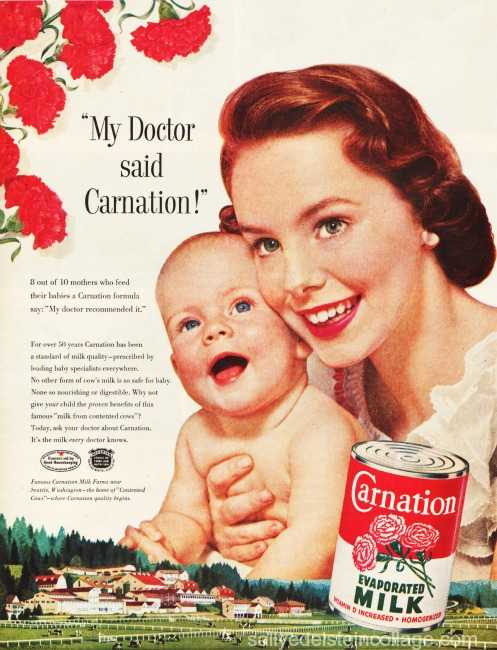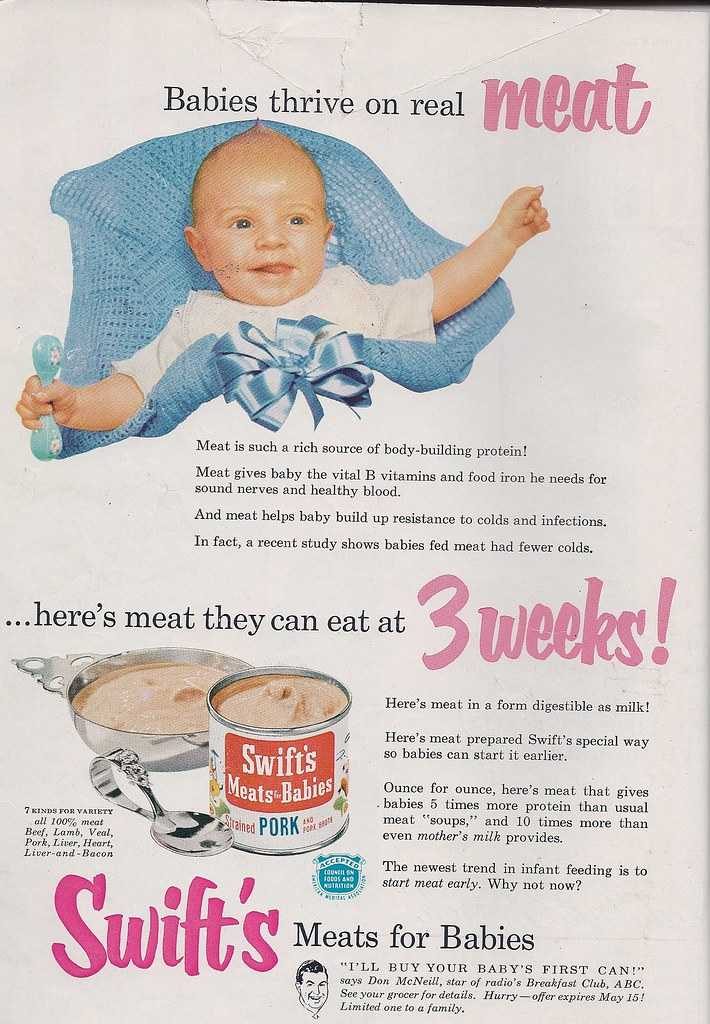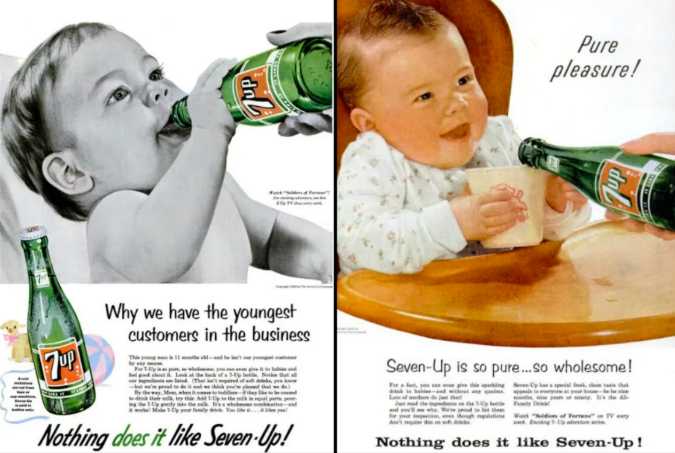The way babies have been fed has dramatically changed over the years. How they did things then is so different from how we do things now! Have you found yourself questioning your grandma’s tip about giving evaporated milk and syrup to your newborn child? Yup, these were actually some of the many odd and wrong infant feeding practices our parents and grandparents had when they grew up. In this article, we discuss the history of infant feeding and how it compares to the current feeding recommendations!
In A Nutshell…
- Before infant formula, mothers who weren’t able to breastfeed turned to wet nurses.
- The first formula milk was developed in the 1860s for the purpose of emergency feeding, and not something to replace or outstand breast milk.
- Home-made formula milk became a thing in the 1930s wherein they mixed cow’s milk, water, cream, sugar or honey in specific ratios.
- Evaporated milk became a popular breast milk alternative, as it was marketed to be less expensive and nutritionally equal to a mother’s milk.
- In the 1950s, even meat and soda companies tried to infiltrate the formula milk industry and marketed their own products as good alternatives to breast milk.
THEN VS NOW: Historical Facts About Infant Feeding Practices
1. THEN: Before the development of formula milk, mothers who weren’t able to breastfeed turned to “wet nurses”.

This practice was very common in Europe and America around the 18th century. Wet nurses were hired by a family and they stayed in their homes to feed the infant until they wean off breast milk. There was a rigid and thorough selection process when a family needed to wet nurse. It was then believed the whatever breast milk the baby drinks would greatly impact their future health.
NOW: Informal milk sharing, including wet nursing, has been a highly discouraged practice by the U.S Food and Drug Administration (US FDA), the Human Milk Banking Association of North America (HMBANA), and the Academy of Breastfeeding Medicine. In addition, a thorough screening has to be done if you wish to share and donate your breast milk, and is best done under the supervision of a milk bank.
2. THEN: The first infant formula was developed in 1867 by a German scientist, Justus von Liebig to serve as emergency food. It wasn’t intended to replace or outstand breastfeeding.
The search to duplicate a mother’s milk started since the early 1800s. They tried initially to give unaltered cow’s milk, but babies were having problems with indigestion and dehydration. Justus von Liebig developed the first commercial powdered baby formula from wheat flour, cow’s milk, malt flour, and potassium carbonate.
Despite the invention back then, formula milk was still considered as an emergency food solution. Breastfeeding was very much encouraged as stated in the Boston Daily Globe newspaper of 1880, “ The Duty of Every Mother and especially those who are charged with the delicate and great responsibility of rearing hand-fed children, is to investigate the merits of the best artificial food in the case of the preservation of infant life.”
NOW: The global market has picked up on the convenience of breast milk substitutes — growing the industry to a $70 billion market. Much of this growth comes from powerful marketing campaigns that are leading mothers to limit or abandon breastfeeding. Instead of prioritizing breastfeeding, some mothers would prefer the ease of formula milk. Even today, many mothers are unaware of the short and long term immunological and health benefits of breast milk.
3. THEN: Your grandparents probably made their own mix to feed home-made formula milk.

A sample prescription of home-made formula milk. It included mixing sugar and irradiated milk in boiled milk bottles.

Home-made formula milk required the addition of syrup and honey to increase its carbohydrate content.
In the 1920s, doctors wrote a formula milk prescriptions. At that time, the parents had to make their own concoction which included cow’s milk, water, cream, sugar or honey in specific ratios. These were thought to be nutritionally equivalent to breast milk. In addition, they were advertised as the less expensive and healthier alternative to breast milk.
After some time, however, formula-fed babies started to show signs of diet-related illnesses like scurvy, rickets, and infections. As a solution, some doctors recommended giving orange juice or cod liver to the home-made formula milk.
NOW: Formula milk has really advanced in terms of its composition. Modern baby formula is now manufactured in sterile conditions. Nutritionally, they contain lactose, plant-based oils (palm, rapeseed, coconut, sunflower, and soybean oil), fatty acids, vitamins, minerals, enzymes, amino acids, and even probiotics in some. Thus, your child would still be receiving the recommended nutrients in their diet.
4. THEN: Evaporated milk boomed as the better and cheaper version of commercial milk formulas in the 1930s.


Evaporated milk’s main claim was that it was doctor recommended. However, the studies conducted back then were deemed inconclusive.

In search of preserving and sterilizing the milk formulas given to babies, evaporated milk was given its spotlight. Babies were nursing on milk that consisted of 13 oz of evaporated milk with 19 oz of water and two tablespoons of either corn syrup or table sugar.
Back then, clinical studies were suggesting that babies fed with evaporated milk thrive as well as those that were breastfed.
Since evaporated milk was less expensive and more convenient than the prescriptions method given by doctors, it rose in popularity up until the 1950s with over 50% of babies back then who were feeding evaporated milk in the USA.
NOW: Evaporated milk has been debunked as a good alternative to breast milk. It does in NO WAY meet the nutritional and immunological content that breast milk has. Modern WHO guidelines still consider breastfeeding as a superior way to feed your infant. And in the event that a mother can’t adequately breastfeed, there are commercial milk formulas that have closely mimicked the nutritional components of breast milk.
5. THEN: Finding the best breast milk substitute became a rave that even meat and sodas were given to babies in the 50s.

Swift’s Meat for Babies was advertised as a breast milk substitute. Also, they claimed that the protein and B-vitamins found in this digestible meat build resistance to cold and infection.

To appeal to all markets, 7-up also targeted babies and advertised their sodas a healthy product for babies in the 1950s.
Formula feeding appealed widely to the public. In fact, by the 1970s, over 75% of American babies were being fed formula milk. Infant formula companies were banking so much in the food industry, which drove other products to follow suit. From meats to sodas, they were marketing their products as good as breast milk could be.
Because of the misinformation, UNICEF estimated 1.2 million deaths due to the unhygienic preparation and nutrient deficiencies that came with the use of formula milk. Formula-fed children were 25 more times likely to die of diarrhea and 4 times more likely to die of pneumonia than a breastfed child.
NOW: Public health organizations have teamed up together to make policies regarding the unethical marketing of formula milk. The International Code of Marketing of Breast Milk Substitutes is an international health policy framework that helps regulate and restrict the marketing of infant formula. Thus, the advertisements of commercial milk formulas should not discourage breastfeeding. Unfortunately, the United States has not yet adopted the recommended policies in the country.
Pros and Cons: Breast Milk vs Infant Formula
According to the USDA and WIC breastfeeding program, mothers are still strongly recommended and encouraged to breastfeed their infants unless there are underlying issues which make it impossible to do so. Of course, the decision of what to feed your child will ultimately rely on you as the parent. However, in order to do so, you should make yourself aware of the pros and cons of breast milk and infant formula.
Breast Milk vs Infant Formula
| Breastfeeding | Bottle-feeding With Formula |
NUTRITION | |
| Has the perfect balance of nutrients | Not as efficiently utilized/absorbed as breast milk |
| Contains high levels of nutrients | Nutritional content depends on proper preparation (human error) |
| Consists of over 40 enzymes, growth factors, and hormones that initiate and facilitate healthy growth and development. | Some babies have difficulty tolerating certain nutrients |
| Easily digested and absorbed | Pediatrician/caregiver determines the amount consumed |
| Content varies according to the milk production stage, which meets the changing nutritional requirements | |
| Infant determines the amount consumed | |
| Milk is free | Formula ranges from $54 to $198 per month depending on the brand |
| Nursing pads, nursing bras, etc. | Bottles, nipples, etc. |
| Breast pump (optional) | |
ADVANTAGES | |
| Always the perfect temperature | Anyone can feed the baby |
| No preparation time | |
| Milk is readily available at any time and any place | |
| Mother’s milk contains Immunoglobulins, providing passive immunity for baby | |
| Skin-to-skin and breastfeeding latch releases a bond-supporting hormone in mom (oxytocin) | |
DISADVANTAGES | |
| The mother must be available for feeding or must provide pumped milk if she is absent. | Warming formula to the proper temperature |
| Missed feedings require pumping. | Preparation time varies |
| Early breastfeeding may be uncomfortable | The baby may not tolerate formula well (diarrhea) |
| Certain medications can interrupt breastfeeding | Always have to carry bottles, formula/mixing items with you |
| Formula milk does not contain Immunoglobulins (no passive immunity) | |
| Possible formula recalls | |
Source: American Pregnancy Association
The Bottom Line: Why Infant Formula Is Still A Scientific Breakthrough Of Its Own
Since the time it was invented, formula milk has really gone through the ages. And with that, it has really developed to be the best it has ever been. We are lucky to be living in these times where there is a commercially available breast milk substitute in the market.
Modern commercial formulas are now nutritionally adequate to meet the needs of a growing baby. They are the best alternatives for when mothers can’t breastfeed. Even so, there are especially useful in emergency situations — making them a life-saver on its own.
However, despite the convenience, it’s still best that mothers — even those suffering from low milk supplies — to still pursue breastfeeding. Nothing compares to the immunity, bond, and maternal fulfillment that breastfeeding gives. There are various strategies and techniques a breastfeeding mother can do to overcome her breastfeeding challenges. Consult your local lactation expert to help you through your breastfeeding journey.





